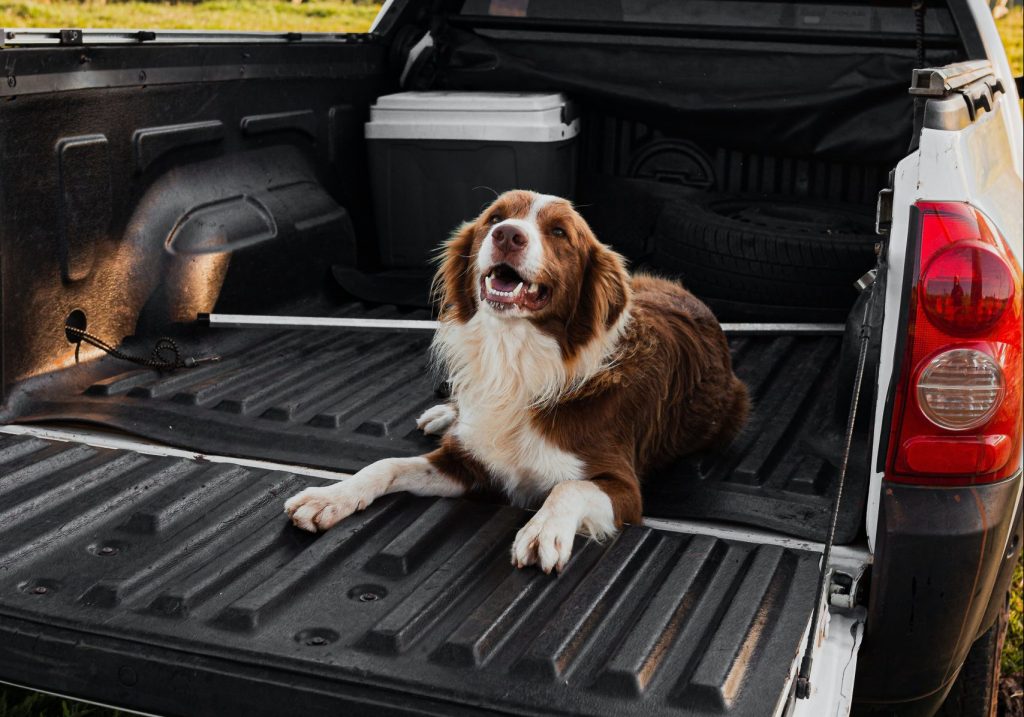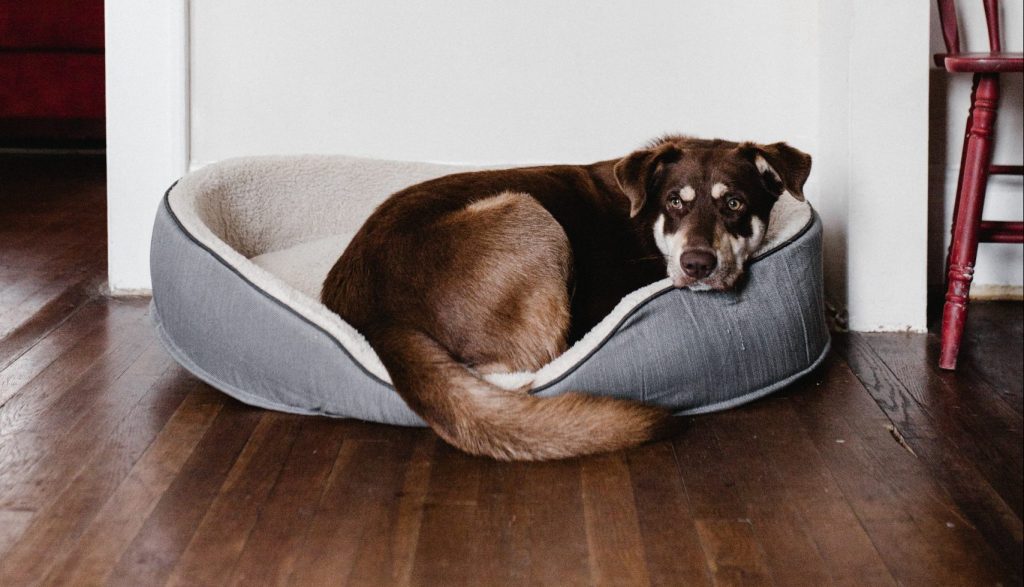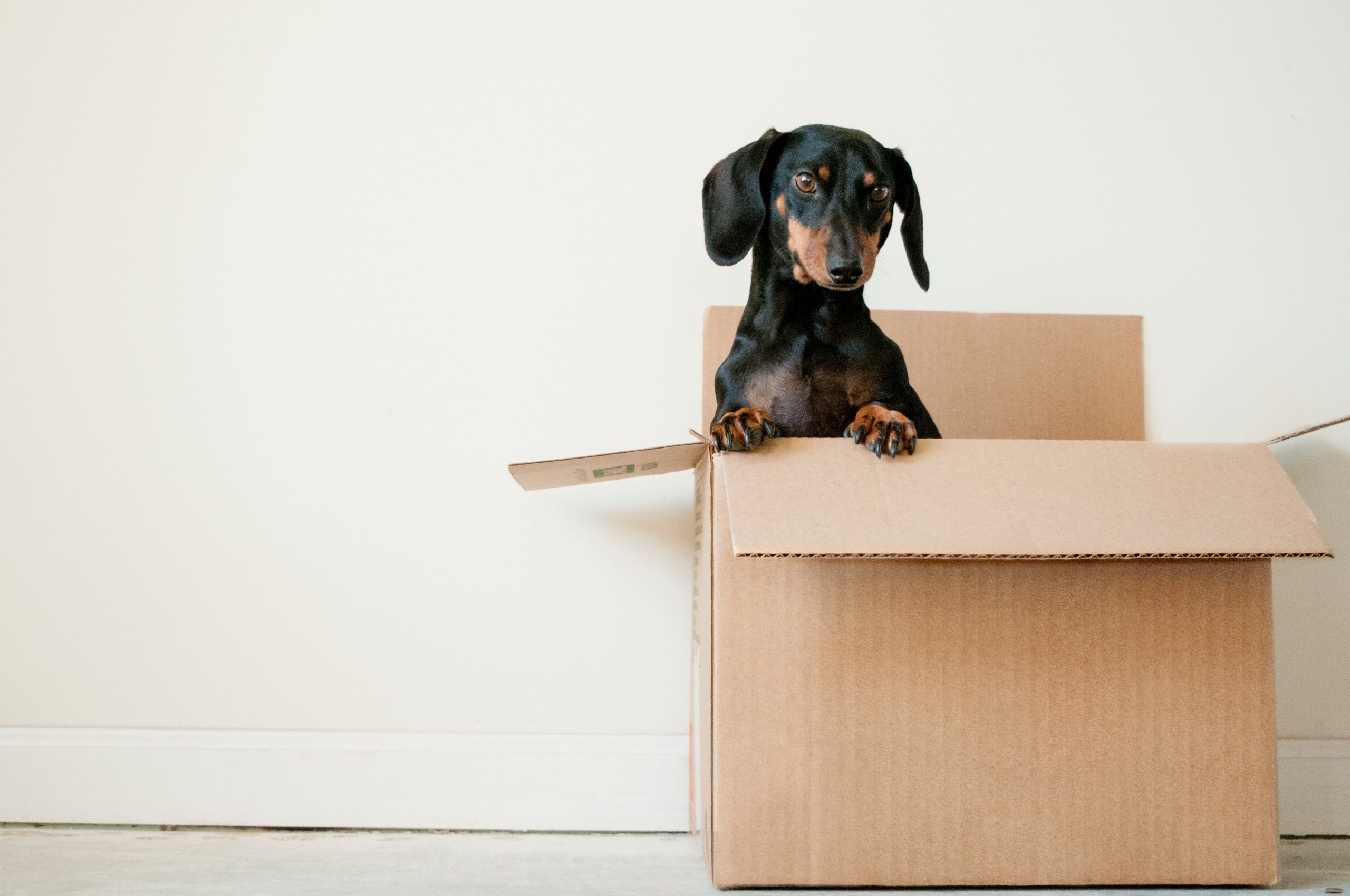Moving with a Dog: How To Settle a Dog Into a New House
March 31, 2022
Dogs thrive on routine and they often understand our routines better than we do. In fact, dogs enjoy having a set schedule so much that they tend to actively resist any changes that could disrupt it. This can make moving with a dog a little tricky, as all of their routines are going to be turned upside down and the environment they knew will be gone. The good news is that you aren’t the first one to try and move a dog and there are steps you can take as their human to make the moving process easier for everyone.
If you’re a dog owner wondering how to settle a dog into a new house, then you’ve come to the right place. Here is a guide on how to help a dog adjust to a new home.
Read More: 12 Tips When Looking For Apartments That Allow Dogs
Preparing Your Dog For Moving Day
Dogs are perceptive animals and many of them can sense when there is going to be a change in routine. Setting out suitcases and moving boxes as well as not having as much time for them could make them anxious as moving day approaches. However, there are ways to prepare your dog for moving day to reduce any anxiety the process could give them.
1. Get Your Dog Used To Moving Supplies
If you are going to use moving supplies like packing boxes to put your things in, then you may want to consider setting out the moving supplies beforehand so that your dog can get used to them ahead of time. Let your dog inspect the supplies on their own and you can even give them treats whenever they approach the supplies to build positive associations. Then, after your dog seems acclimated, you can start packing things away without them causing much of a fuss. That is if they don’t end up sleeping on them.
2. Maintain Your Dog’s Routine
Dogs are creatures of habit and despise change. Preparing for moving day will keep you busy but you should still try to maintain your dog’s daily routine as much as you can.
Continue the feeding times on the typical schedule along with their walking or playtimes. A consistent routine will reduce anxiety which will prevent undesirable behaviors like barking or destroying furniture.
Consistent exercise is also important for dogs. Just like people, dogs require a balance between rest and physical activity to be healthy. They say a tired dog is a happy dog, but as moving day approaches, you’ll probably have less time to spend exercising with your dog.
Try to incorporate exercise into your schedule whenever you have the time or find a trusted friend to play with your dog and tire them out. The last thing you need is for your dog to be frustrated because of pent-up energy. (And there goes your moving supplies.)
3. Prepare Them For The Trip
If you’re moving a long distance, your dog will have to travel that distance with you. This can be a stressful experience for them especially if they aren’t comfortable in vehicles.
Try to speak with your vet about treating travel anxiety in dogs. They may be able to provide calming medication or anti-anxiety gear that can make the trip more comfortable for your pup.
It’s also important that you crate train your dog before the trip so that their first experience in a crate isn’t on an already stressful day. Most dogs won’t mind crates but if your dog is one of the few that does, you’ll want to make sure they aren’t uncomfortable in one on the trip.
You should also make sure that your dog has identification, in a chip or a collar, in case the worst-case scenario happens and your dog gets loose.

What To Do With Your Dog On Moving Day
On the day of your move, there will be a lot to do and worry about. You’ll most likely be extremely preoccupied, so you won’t have much time to spend with your dog. Your dog acting out because of a lack of attention will only make things worse. Here are some things you can do to make moving day as easy as possible for your dog.
1. Find a Pet-Sitter
Stressed-out dogs have a tendency to want to stay close to their owners which can get in the way of you loading things in the moving truck. Doors will also be opening a lot on moving day which provides ample opportunity for your dog to make an escape.
It may be easier to take your dog out of the picture entirely on moving day so that you don’t have to worry about them. You can leave your dog with a trusted friend, family member, or a daycare they are familiar with and then pick them up after the move is finished.
If you don’t have someone or someplace you can take your dog to, then it may be best to create an isolated area for them. This could be a blocked-off area of the house, a fenced backyard, or a quiet room that nobody is using.
2. Explore The New Environment
Once you’ve unloaded your moving truck and everything is in its place, it’s time for your dog to explore their new home. Let them sniff around the yard and check out all the new smells. This is an important step in getting them comfortable in their new surroundings. Taking them for a walk around the neighborhood gets them acclimated to the area, while also burning off all of their pent-up energy.
When you and your dog are walking through the new house, let them explore the house on a leash. Some dogs can feel the need to mark the new territory with urine or chew on things as a way to spread their scent into the new space. Being with your dog as he explores the house discourages undesirable behavior and reduces their anxiety about the change.
Dogs are excellent at reading our body language, and they can reflect the emotions we are putting out as well. Make sure to have a positive demeanor when showing your dog around your new house and neighborhood. Positive energy can reduce any stress or anxiety the dog may be feeling from the new surroundings. You can also offer them treats as a form of positive association with the new area.
3. Set Up New Safe Space
The need for a safe space in dogs is similar to the need for a bedroom in humans. It’s their place of relaxation and comfort. Of course, dogs don’t always get entire rooms to themselves, nor do they need it. Most of the time all they will need is a space with familiar items that makes them feel safe. In your new home, try to set up the dog’s safe space in the same way it was set up at the previous home.
The dog’s toys, dog bed, water and food bowl will all bring familiar scents and provide comfort. In fact, it’s best not to wash things that your dog is fond of since anything you clean will lose the scent of the previous home.

How To Help a Dog Adjust To a New Home
Dogs are highly attached to their family and many dogs deal with separation anxiety which can lead to destructive behavior. A move to a new home, even if your dog has never had separation anxiety or has gotten over it, may be stressful enough to trigger separation anxiety. The first few months in the new house are important for helping the dog adjust to it, and there are many things you can do to make the adjustment easier.
1. Keep The Same Schedule
After your dog has had their routine messed up from the move, returning to their normal schedule will show them that things are back to normal. Continue feeding and walking them at the same time you were doing it before the move. It’s probably not the best time to introduce any new elements into the dog’s life like a different food or harness. The more things that can stay the same, the better the dog will adjust to the new space.
2. Give Your Dog Lots of Attention
It can be easy to neglect your dog after moving into a new house. There are numerous things to do after the initial move. Nonetheless, spending time with your dog is the best way to keep them comfortable and prevent them from becoming a ball of anxiety. Make sure to comfort your dog every day and if you need to, schedule the time to play with your dog or just spend time with them in your house.
3. A Tired Dog is a Good Dog
Physical activity is not only healthy for dogs but it also keeps your dog’s stress levels down. Taking your dog for a stroll or playing with him is also a fantastic way to spend time together. However, there are numerous ways to engage your dog that don’t include going outside. You may also stimulate your dog’s mind with mental activities.
Hiding food throughout the home or using brain games can keep your dog occupied throughout the day. A dog that is stimulated both mentally and physically will be more than happy.
4. Wait To Have Visitors Over
You might be excited to show off your new home or want to host an event to meet new people, but a dog prone to anxiety may get distressed by having a lot of people over too soon. Try to keep the number of visitors low in the first few months of moving.
Inviting a couple of friends or family over will be much less overwhelming for the dog than a party with over ten people. Give your dog time to adapt by slowly increasing the number of people that are allowed in the home over time.
5. Don’t Leave Them Alone For Too Long
In an unfamiliar space, pets are going to look to their owners for comfort. Most dogs will look to their owner in a new house to stay calm and feel secure. This is a time to spend as much time with your dog as possible. If you do have to leave your dog, try not to leave them for too long as they may misbehave and defecate in the house or puke. Leaving calming music on can also help with anxiety as it can lower stress and mask outside noises.
Remember To Be Patient
All dogs are different. Some dogs will adapt immediately to their new surroundings while others will take months to finally adjust. Moving is a stressful time for everyone involved and unlike humans, dogs don’t understand the reason behind all of the changes. You could notice a change in your dog’s conduct or an increase in unpleasant behaviors such as whining, barking, or peeing inside.
In any case, it’s critical to stay cool and keep a positive attitude since any increase in stress will just make the dog more stressed. If you follow these tips, you and your dog will be completely acclimated to the new house before you know it.
Photo by Erda Estremera on Unsplash

